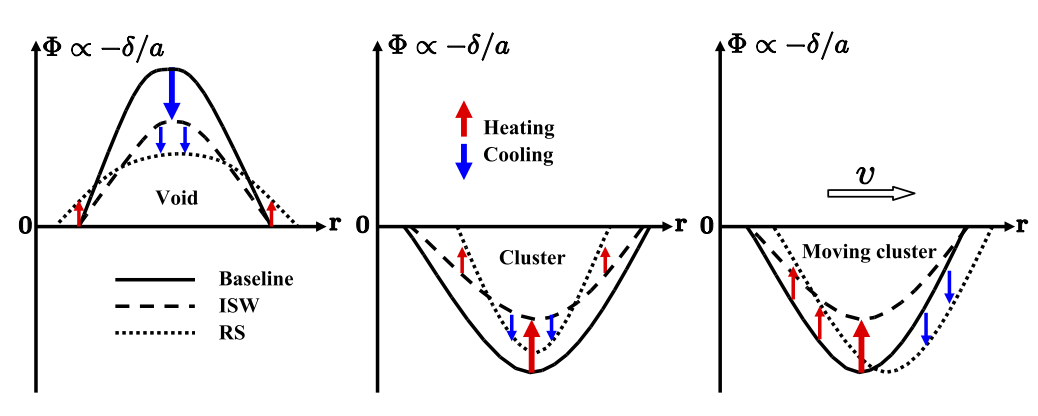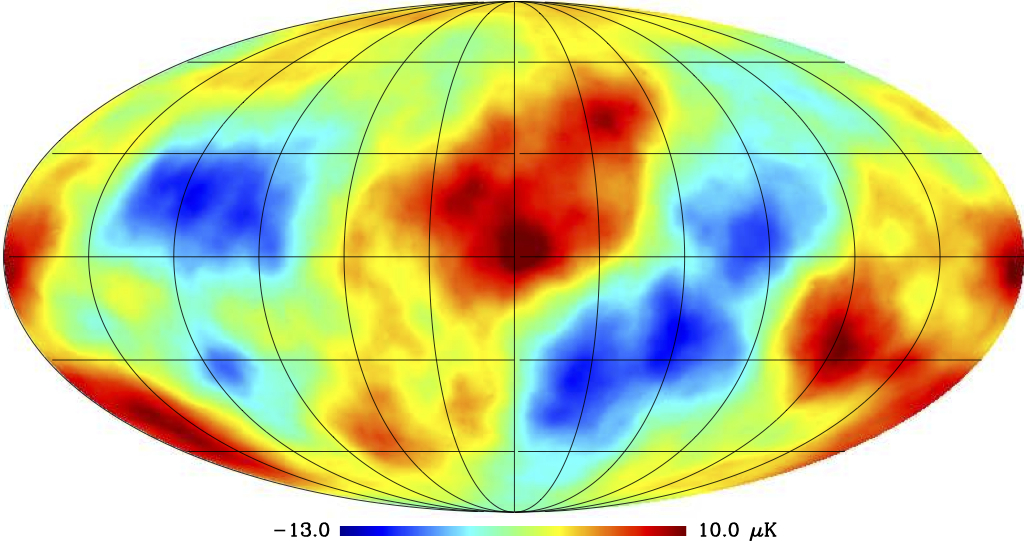The Integrated Sachs-Wolfe effect and Rees-Sciama effect
The late time acceleration in the expansion of the Universe is one of the most intriguing observations in modern cosmology. It is perhaps driven by dark energy that the late-time cosmic potentials are decaying. In linear theory, CMB photons traveling through voids (or superclusters) will lose (or gain) energy, living cold (or hot) imprints on the CMB. This is the linear Integrated Sachs-Wolfe effect (ISW). However, structure formation becomes highly non-linear at the late time. The non-linear ISW effect, or Rees-Sciama effect (RS) complicates the situation (Cai et al. 2010):
1.) It enhances the ISW effect in void centres but counters the effect at the edge of voids (Fig. 1, left).
2.) For superclusters, the RS effect counters the ISW at the centre but enhances it at the edge (Fig. 1, middle).
The RS effect in both cases leaves an imprint of a cold spot surrounded by a hot ring.
3.) For moving clusters, its imprint on the CMB is a dipole, with a cold spot at the leading part and a hot spot at its tail (Fig. 1, right).

Figure 1: The solid lines depict for a void (left), cluster (middle) and moving cluster (right) the gravitational potential at a reference epoch, i.e. when a CMB photon enters the potential. The dashed and dotted lines show predictions for the evolved potential at a later time, i.e. when the CMB photon exits the region. The heavy up and down arrows indicate the heating or cooling of the CMB predicted by the ISW effect. The lighter arrows indicate the RS contribution to the temperature perturbations (Cai et al. 2010).


Figure 2: Full sky map of the ISW effect plus the RS effect (top) from N-body simulations (0 < z < 0.17). The RS effect alone is shown at the bottom panel. Its contribution to the ISW effect is approximately 10% at the late time (Cai et al. 2010).